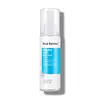What's inside
What's inside
 Key Ingredients
Key Ingredients

 Benefits
Benefits

 Concerns
Concerns

No concerns
 Ingredients Side-by-side
Ingredients Side-by-side

Water
Skin ConditioningCentella Asiatica Extract 27%
CleansingButylene Glycol
HumectantGlycerin
HumectantDipropylene Glycol
HumectantHydroxyethyl Urea
HumectantAllantoin
Skin ConditioningPanthenol
Skin ConditioningSodium Hyaluronate
HumectantHydrolyzed Collagen
EmollientSh-Oligopeptide-1
Skin ConditioningNelumbo Nucifera Extract
Skin ConditioningArtemisia Annua Extract
MaskingOryza Sativa Extract
AbsorbentSaccharomyces Ferment
Skin ConditioningSolanum Melongena Fruit Extract
Skin ConditioningMelaleuca Alternifolia Leaf Extract
PerfumingSqualane
EmollientBeta-Glucan
Skin ConditioningHippophae Rhamnoides Fruit Extract
Skin ConditioningMadecassic Acid
Skin ConditioningAsiaticoside
AntioxidantAsiatic Acid
Skin ConditioningTrideceth-10
CleansingPropanediol
SolventHydroxyacetophenone
Antioxidant1,2-Hexanediol
Skin ConditioningEthylhexylglycerin
Skin ConditioningDipotassium Glycyrrhizate
HumectantCitric Acid
BufferingSodium Citrate
BufferingWater, Centella Asiatica Extract 27%, Butylene Glycol, Glycerin, Dipropylene Glycol, Hydroxyethyl Urea, Allantoin, Panthenol, Sodium Hyaluronate, Hydrolyzed Collagen, Sh-Oligopeptide-1, Nelumbo Nucifera Extract, Artemisia Annua Extract, Oryza Sativa Extract, Saccharomyces Ferment, Solanum Melongena Fruit Extract, Melaleuca Alternifolia Leaf Extract, Squalane, Beta-Glucan, Hippophae Rhamnoides Fruit Extract, Madecassic Acid, Asiaticoside, Asiatic Acid, Trideceth-10, Propanediol, Hydroxyacetophenone, 1,2-Hexanediol, Ethylhexylglycerin, Dipotassium Glycyrrhizate, Citric Acid, Sodium Citrate
Water
Skin ConditioningPropanediol
Solvent1,2-Hexanediol
Skin ConditioningCaprylic/Capric Triglyceride
MaskingMyristoyl/Palmitoyl Oxostearamide/Arachamide Mea
Skin ConditioningGlycerin
HumectantSorbitan Stearate
EmulsifyingCetearyl Alcohol
EmollientGlyceryl Stearate
EmollientViscum Album Fruit Extract
SoothingPhytosterols
Skin ConditioningMicrocrystalline Cellulose
AbsorbentCellulose Gum
Emulsion StabilisingAllantoin
Skin ConditioningHydrolyzed Hyaluronic Acid
HumectantStearic Acid
CleansingCitrus Aurantium Dulcis Oil
MaskingLavandula Angustifolia Oil
MaskingDihydroxyisopropyl Palmoylpalmamide
HumectantButylene Glycol
HumectantXanthan Gum
EmulsifyingVetiveria Zizanoides Root Oil
MaskingMadecassoside
AntioxidantPolyglyceryl-10 Laurate
Skin ConditioningPalmitoyl Pentapeptide-4
Skin ConditioningWater, Propanediol, 1,2-Hexanediol, Caprylic/Capric Triglyceride, Myristoyl/Palmitoyl Oxostearamide/Arachamide Mea, Glycerin, Sorbitan Stearate, Cetearyl Alcohol, Glyceryl Stearate, Viscum Album Fruit Extract, Phytosterols, Microcrystalline Cellulose, Cellulose Gum, Allantoin, Hydrolyzed Hyaluronic Acid, Stearic Acid, Citrus Aurantium Dulcis Oil, Lavandula Angustifolia Oil, Dihydroxyisopropyl Palmoylpalmamide, Butylene Glycol, Xanthan Gum, Vetiveria Zizanoides Root Oil, Madecassoside, Polyglyceryl-10 Laurate, Palmitoyl Pentapeptide-4
Ingredients Explained
These ingredients are found in both products.
Ingredients higher up in an ingredient list are typically present in a larger amount.
1,2-Hexanediol is a synthetic liquid and another multi-functional powerhouse.
It is a:
- Humectant, drawing moisture into the skin
- Emollient, helping to soften skin
- Solvent, dispersing and stabilizing formulas
- Preservative booster, enhancing the antimicrobial activity of other preservatives
Allantoin is a soothing ingredient known for its protective and moisturizingg properties. Because of this, it is often added to products with strong active ingredients.
Studies show higher concentrations of this ingredient can promote wound healing.
Though it can be derived from the comfrey plant, allantoin is produced synthetically for cosmetic products to ensure purity.
Learn more about AllantoinButylene Glycol (or BG) is used within cosmetic products for a few different reasons:
Overall, Butylene Glycol is a safe and well-rounded ingredient that works well with other ingredients.
Though this ingredient works well with most skin types, some people with sensitive skin may experience a reaction such as allergic rashes, closed comedones, or itchiness.
Learn more about Butylene GlycolGlycerin is already naturally found in your skin. It helps moisturize and protect your skin.
A study from 2016 found glycerin to be more effective as a humectant than AHAs and hyaluronic acid.
As a humectant, it helps the skin stay hydrated by pulling moisture to your skin. The low molecular weight of glycerin allows it to pull moisture into the deeper layers of your skin.
Hydrated skin improves your skin barrier; Your skin barrier helps protect against irritants and bacteria.
Glycerin has also been found to have antimicrobial and antiviral properties. Due to these properties, glycerin is often used in wound and burn treatments.
In cosmetics, glycerin is usually derived from plants such as soybean or palm. However, it can also be sourced from animals, such as tallow or animal fat.
This ingredient is organic, colorless, odorless, and non-toxic.
Glycerin is the name for this ingredient in American English. British English uses Glycerol/Glycerine.
Learn more about GlycerinPropanediol is an all-star ingredient. It softens, hydrates, and smooths the skin.
It’s often used to:
Propanediol is not likely to cause sensitivity and considered safe to use. It is derived from corn or petroleum with a clear color and no scent.
Learn more about PropanediolWater. It's the most common cosmetic ingredient of all. You'll usually see it at the top of ingredient lists, meaning that it makes up the largest part of the product.
So why is it so popular? Water most often acts as a solvent - this means that it helps dissolve other ingredients into the formulation.
You'll also recognize water as that liquid we all need to stay alive. If you see this, drink a glass of water. Stay hydrated!
Learn more about Water